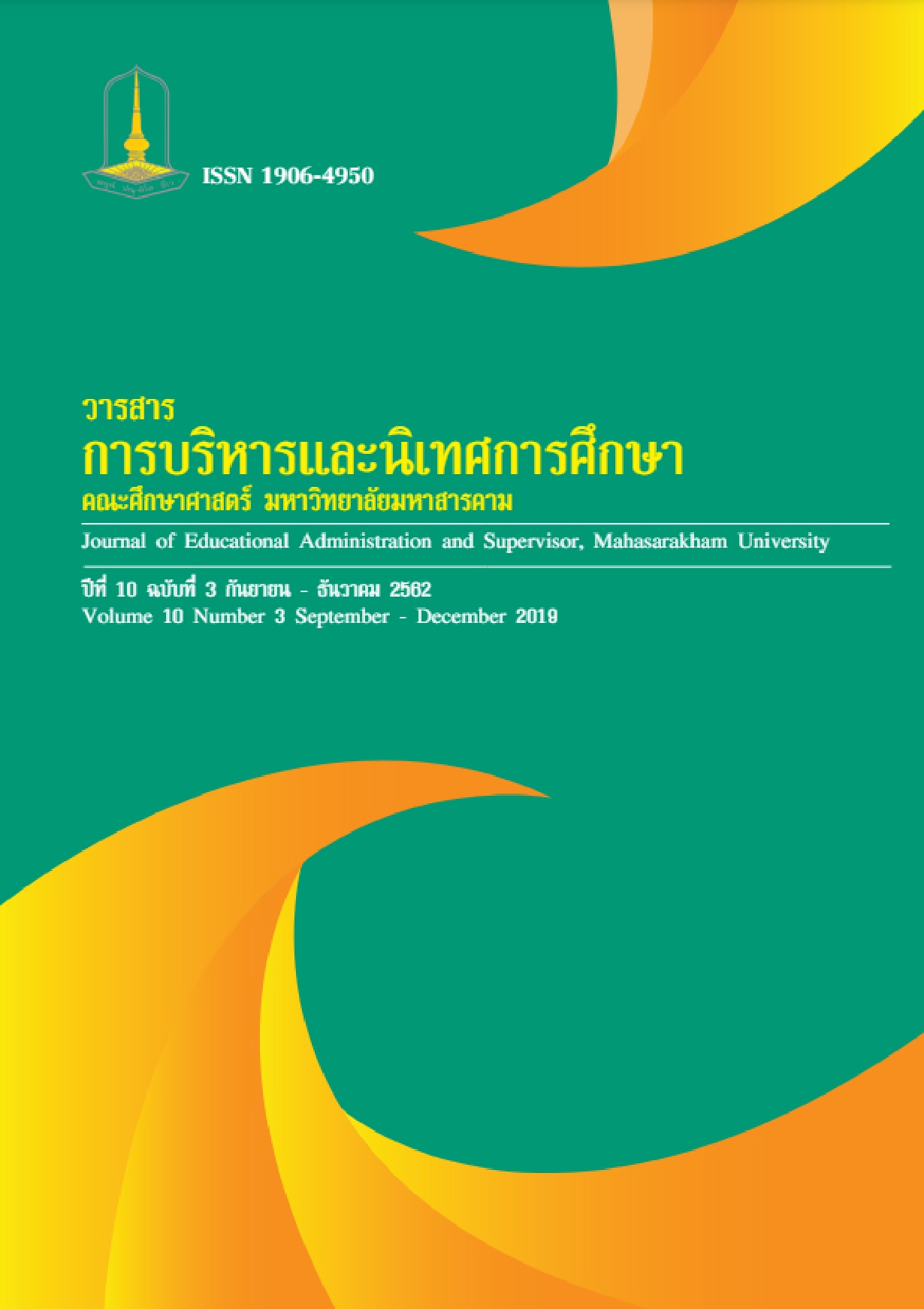English Language Teaching Strategies for Primary Education Level: A Case Study of Mahasarakham University Demonstration School (Elementary)
Main Article Content
Abstract
Teaching English in Primary education level is important and significant for Thai education system. Hence, it is an elementary element to improve learning at the high level and develop abilities for English for communication in 4.0 Era. Encouraging learners gain the language proficiency; teachers have to apply multi-teaching strategies which are based on the individual differences. However, Mahasarakham University Demonstration School (Elementary), MUDS, is well-known school for teaching English effectively. As indicated, students of MUDS highly scored 100 of National Test called Ordinary National Educational Test (O-Net) every year (National Institute of Educational Testing Service, 2019). The article presented English language teaching strategies of MUDS. It was also reviewed learning language theories and language teaching strategies to facilitate English proficiency, and useful for English teachers to understand more about language learning strategies.
Downloads
Article Details
References
กรมอาเซียน. (2555). ความรู้เกี่ยวกับประชาคมอาเซียน. กรุงเทพฯ : กระทรวงการต่างประเทศ.
กระทรวงศึกษาธิการ. (2545). แบบฝึกประกอบการสอนตามแผนการจัดกิจกรรมการเรียนการสอนภาษาอังกฤษ. พิมพ์ครั้งที่ 3 กรุงเทพฯ: โรงพิมพ์คุรุสภาลาดพร้าว.
วิจารณ์ พานิช. (2555). วิถีสร้างการเรียนรู้เพื่อศิษย์ในศตวรรษ ที่ 21. กรุงเทพฯ: มูลนิธิสดศรี-สฤษดิ์วงศ์.
ศรีวิไล ดอกจันทร์. (2536). การสอนภาษาไทยในฐานะ ภาษาต่างประเทศ. (เอกสารสัมมนา). 19 - 20 สิงหาคม.
สถาบันทดสอบทางการศึกษาแห่งชาติ. (2562). ออนไลน์: http:// www.niets.or.th. เข้าถึงเมื่อ 1 ธันวาคม 2562.
สถาบันทดสอบทางการศึกษาแห่งชาติ. (2557). ออนไลน์: http:// www.niets.or.th. เข้าถึงเมื่อ 26 ตุลาคม 2557.
สุภัทรา อักษรานุเคราะห์. (2532). การสอนทักษะทางภาษาและวัฒนธรรม. กรุงเทพฯ: สำนักพิมพ์จุฬาลงกรณ์มหาวิทยาลัย.
สุมิตรา อังวัฒนกุล. (2540). กิจกรรมการสอนภาษาอังกฤษเพื่อการสื่อสาร. กรุงเทพฯ: สำนักพิมพ์จุฬาลงกรณ์มหาวิทยาลัย.
สำนักงานคณะกรรมการศึกษาขั้นพื้นฐาน. (2551). หลักสูตรแกนกลางการศึกษาขั้นพื้นฐานพุทธศักราช 2551. กรุงเทพฯ: สำนักงาน.
Barkley, E.F. (2010). Student engagement techniques: A handbook for college teachers. San Francisco, CA: Jossey- Bass.
Fink, L.D. (2003). Creating significant learning experiences: An integrated approach To Designing College Courses. San Francisco, CA: Jossey – Bass.
Janice, Light and David, McNaughton. (2014). “Communication: A New Definition for a New Era of Communication?.” The Pennsylvania State University, Communication Science and Disorder, 30: 1-18.
Kolb, D.A. (1976). Learning Style Inventory: Technical Manual. Englewood Cliffs. New Jersey: Prentice Hall.
Kolb, D (1984). Experiential learning: Experience as the source of learning and development. Englewood Cliffs : Prentice Hall.
Nafisa, T. Burganova and Akzam, A. Valeev. (2010). “Development of Technical College Students’ Communicative Competence”. Canadian Center of science and Education Journal, 94: 116-136.
Oxford, R. (1990). Language learning strategies: What every teacher should know. Boston. MA. : Heinle and Heinle.
Raimes, A. (1987). Techniques in Teaching Writing. Oxford: Oxford University Press. Spratt, M., Pulverness, A. and Williams, M. (2007). The TKT Teaching Knowledge Test Course. London: Cambridge University Press.
Stern, H. H. (1983). Fundamental concepts of language teaching. Oxford: Oxford University Press.
West, M. (1953). A General Service List of English Words. London: Longman.


